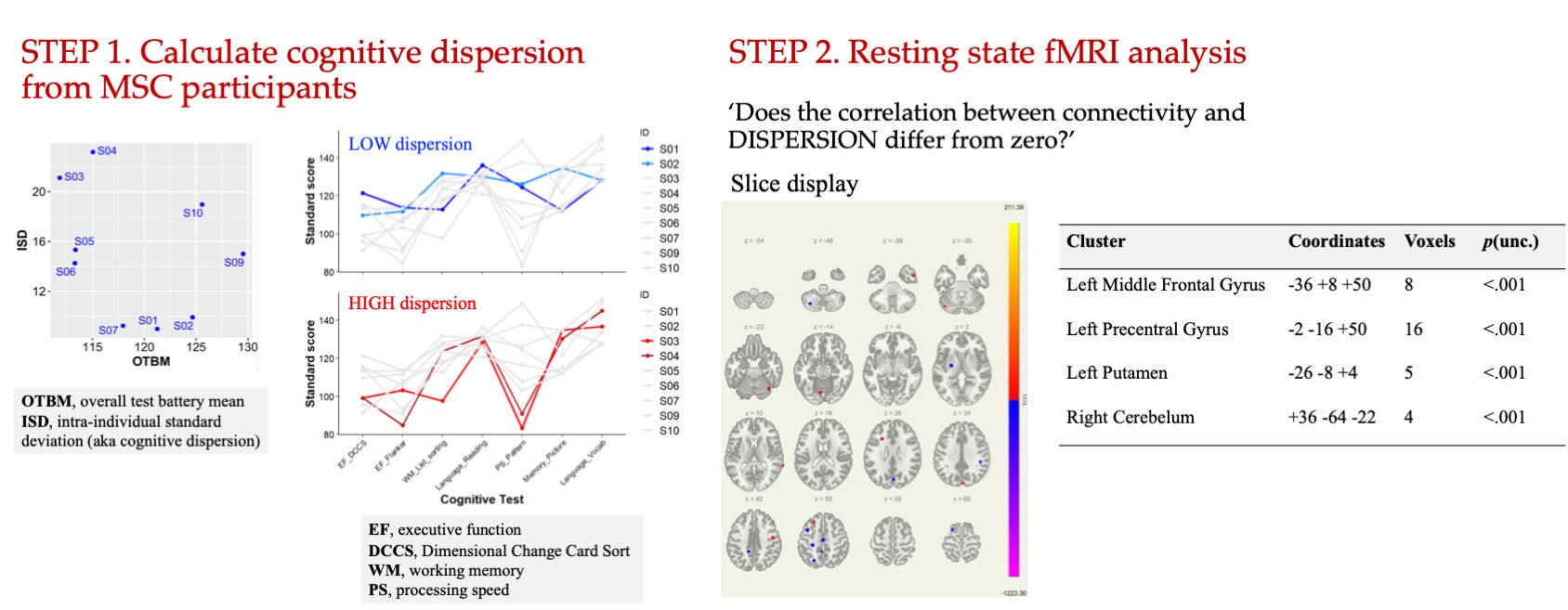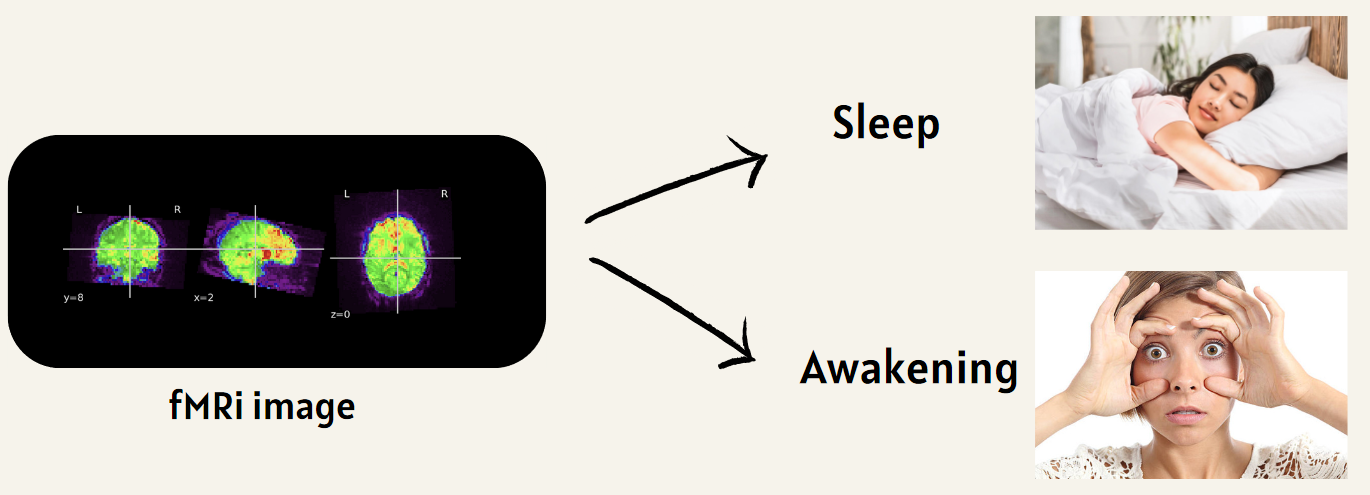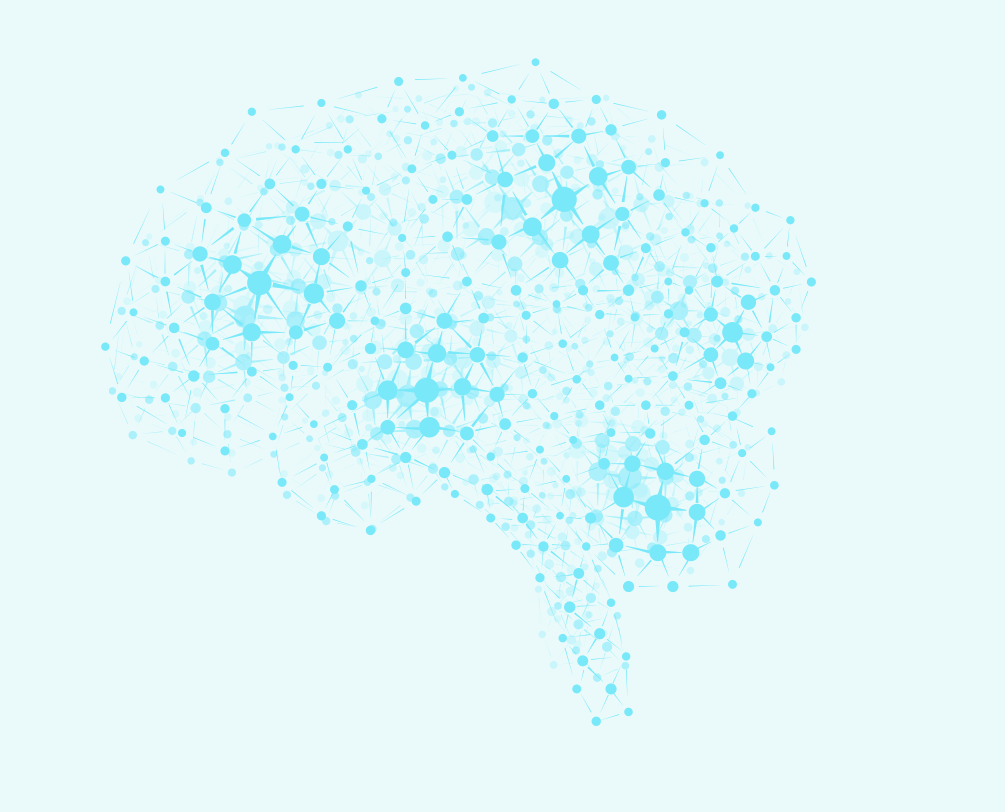
2025 Brainhack School (Mini-)Project - Cognitive Dispersion and Its Neural Correlates
By Truc (Curt) Nguyen
Published on June 14, 2025
June 14, 2025

Project definition
Background
Cognitive dispersion is a measure of intra-individual fluctuations across a range of neuropsychological tests, operationalized as the standard deviation of scores across multiple cognitive domains or tasks during one occasion. One of the most prevailing speculations regarding the mechanism of dispersion is the disruption of functional connectivity. However, these studies have primarily consisted of cross-sectional findings, i.e., scans that were acquired at a single time point, examined group-average brain, with RS-fMRI scan length lasting 5–6 minutes—an approach that might not fully capture functional brain organization at the individual level. While conventional fMRI studies have strived to increase the sample size, more recent works have directed attention towards precision functional mapping, i.e., collecting large amounts of data at the individual level.
Here I (a third year PhD student in Neuroscience at National Taiwan University / Academia Sinica as of June 2025) propose to use state-of-the-art precision functional mapping tools to determine brain activity patterns associated with cognitive dispersion. As a proof-of-concept (pilot) study, I will be using the neuropsychological and fMRI data from the Midnight Scan Club dataset (OpenNeuro ds000224) to examine the neural correlates of cognitive dispersion.
Tools
- MATLAB;
- CONN toolbox, an SPM-based software for the analysis of functional connectivity;
- Utilities by the authors of the Midnight Scan Club dataset (github);
- Tutorials to run the precision functional mapping pipeline (Lynch et al., Nature 2024; github) and the multi-session hierarchical Bayesian modeling (Kong et al., Cereb Cortex 2019; github).
Data
The Midnight Scan Club dataset (Gordon et al., Precision Functional Mapping of Individual Human Brains, Neuron 2017; OpenNeuro ds000224).
Results
Progress overview
During the three weeks that I had to work on this mini-project, I ran into multiple errors in MATLAB (details in the PDF file of my presentation). After hours (and hours) of troubleshooting and as the deadline to submit my project approached, I resorted to use the CONN toolbox for a quick analysis of the resting-state fMRI data from Midnight Scan participants.
Tools I learned during this project
- Human Connectome Workbench to visualize the CIFTI files (derivatives).
- MATLAB running code and troubleshooting.
- CONN toolbox for fMRI data preprocessing and functional connectivity analysis.
Conclusion and acknowledgement
Many, many thanks to the 2025 Brainhack School Organizers (Faculty and TAs)! I have learned so much from you and my peers this semester.


